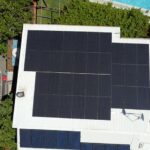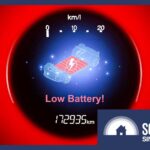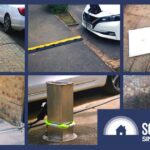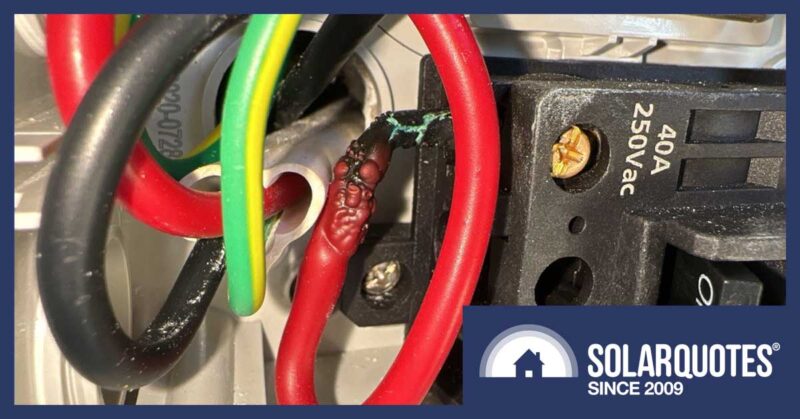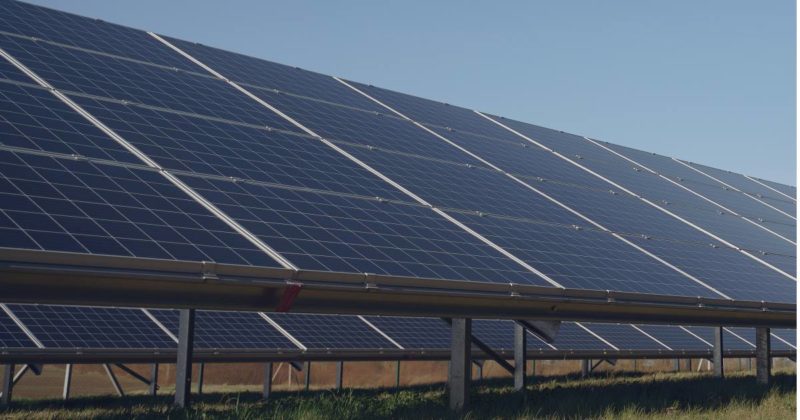How To Choose The Right EV Charging Cable
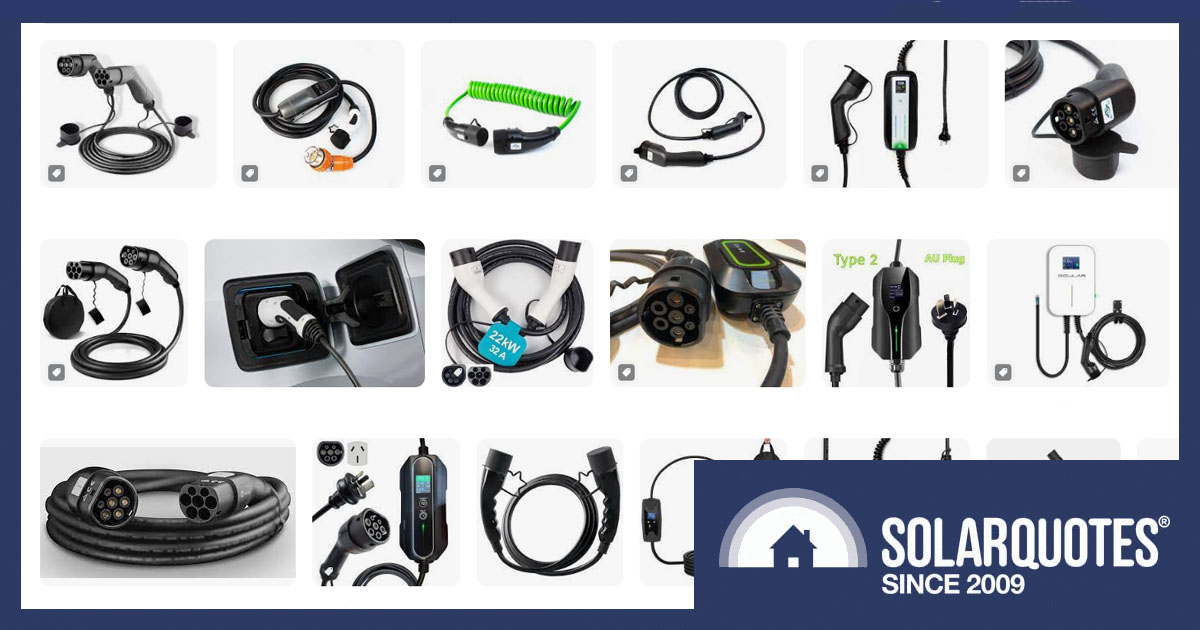
One item often overlooked when buying an EV charger is the charging cable itself.
Does it really matter what cable you buy? Yes! Without the correct cable, your EV charging – at home and on the road will be slower and more frustrating than it needs to be.
Here’s what you need to know:
- Tethered or untethered charger?
- How long should the cable be?
- Are coiled cables a good idea?
- What connector types should be on each end?
- Should you get a three-phase or single-phase charging cable?
- What cable rating (amps) do you need?
- Why you can’t daisy-chain charging cables.
- Do you need your own cable for public charging?
- Certifications and standards.
- Looking after your cable.
Who’d have thought there would be so much to consider?
Let’s get started:
Note: From here, I’ll also refer to EV chargers as EVSE (Electric Vehicle Supply Equipment) because, technically, the EV charger is inside your car, and the box on the wall simply delivers AC power.
#1 Tethered Or Untethered?
As far as cables go, EVSEs come in two types: tethered and untethered.
Untethered
Untethered chargers come without a charging cable and allow you to connect your own.
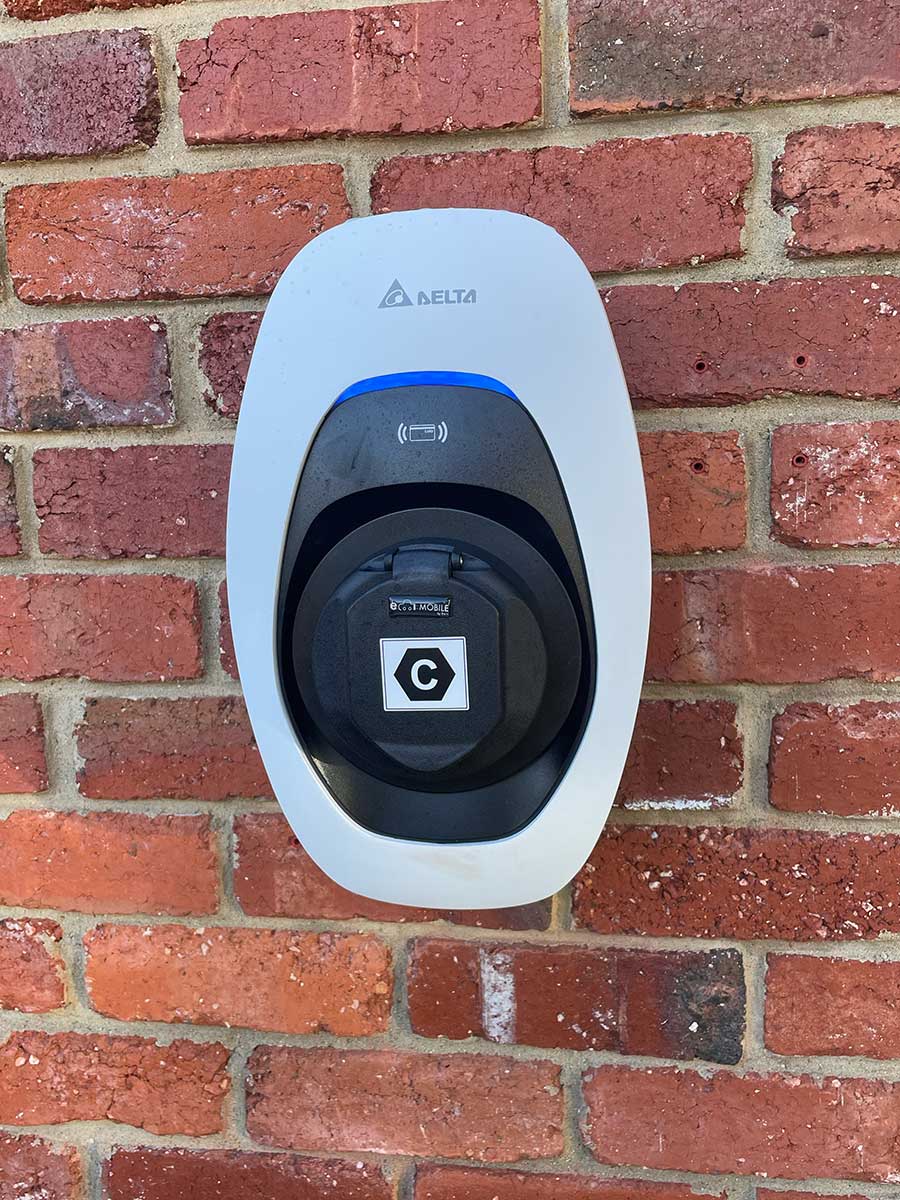
The untethered version of the Delta AC Max
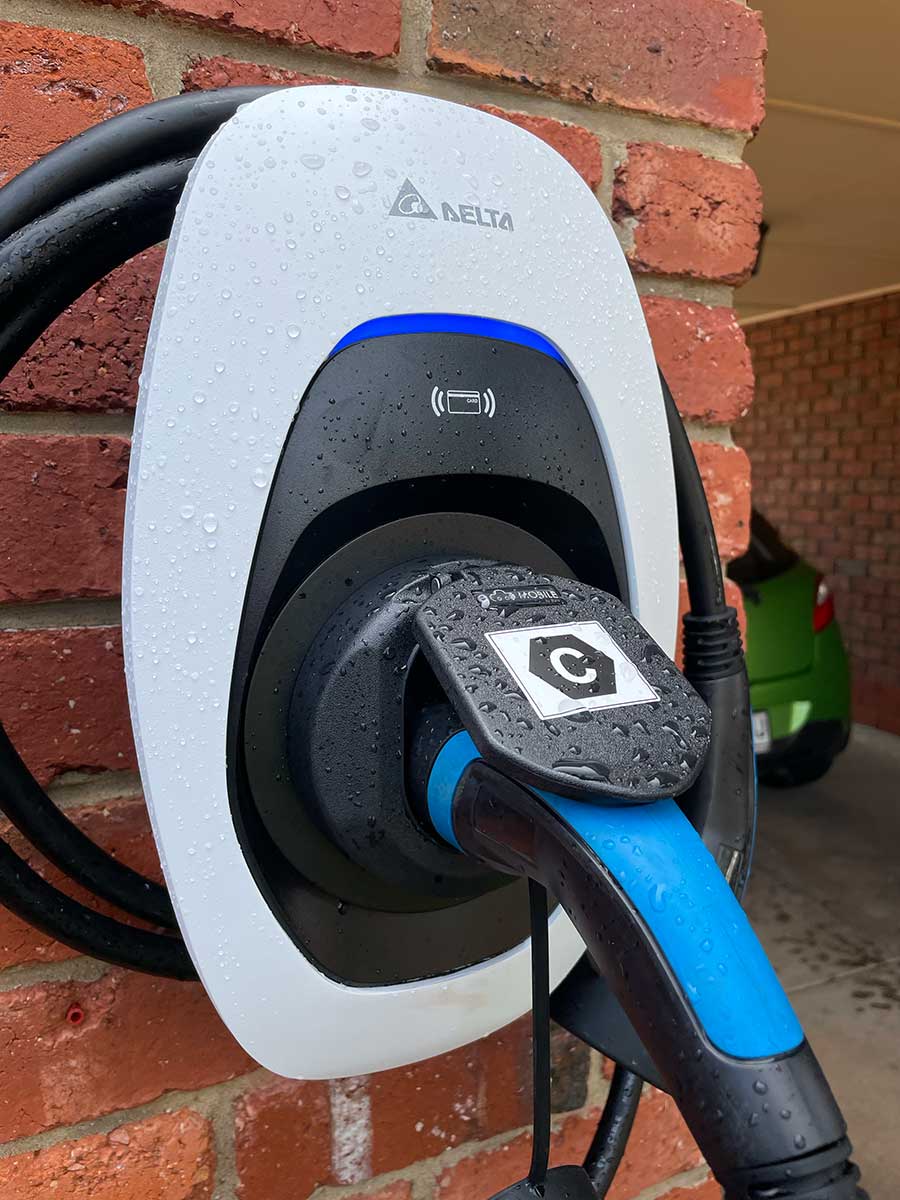
Delta AC max with charging cable attached.
Untethered Chargers: pros and cons
- Pro: Flexibility. Use any length of charging cable you like. You can customize cable lengths. No need to shuffle cars around to get close to the charger. Change the length if you feel the need.
- Con: Additional cable management. Bring your own cable/s, plug/unplug both ends, unroll/roll up, carry, and store separately. You need your own hanger or storage set-up as it’s not integrated into the EVSE.
- Con: Extra cost. The cable doesn’t come with an untethered EVSE, so you’ll have to fork out for one on top of the cost of the charger. Untethered EVSEs are typically $20-50 cheaper than tethered, but a cable is $100-$200.
- Con: Theft worries. If your EVSE does not lock the cable into its body when you are not charging, you must either put it away after every charge, or risk theft1
- Pro: Theft Worries. If you are worried about eshays with cable cutters stealing your cable for copper, you can put it away when it’s not in use.
Tethered
Tethered chargers have a fixed-length cable permanently attached:
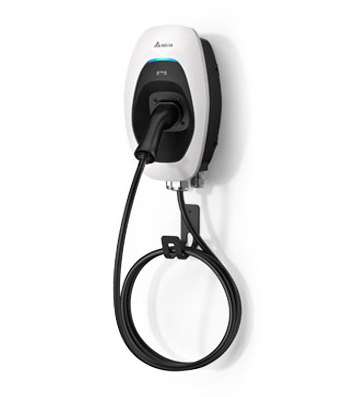
Tethered pros and cons
- Pro: Convenience. The cable is permanently fixed to the EVSE, so there’s only one end to plug in (your vehicle). Simply plug it in and start charging, then hang it back on the charger.
- Con: Limited flexibility. Since the cable length is fixed, it makes for a one size fits all situation, and may be awkward for multiple EVs or different parking scenarios.
- Con: Maintenance. If the cable gets damaged and needs replacing you can add a service call to the bill, plus waiting time to get the job done.
#2 How Long Should Your EV Charging Cable Be?
Charging at home
Firstly, stating the obvious – you want a cable long enough to charge at home easily. Measuring the distance conservatively from the EVSE to the charge port on your vehicle is a good place to start.
Did you know there’s no standard for charge port locations on all the different EV models available in Australia right now? A family member might be upgrading their vehicle at some stage, so planning ahead, it might be an idea to have a cable that easily reaches the furthest point of any car whether it is forward or reverse parked.
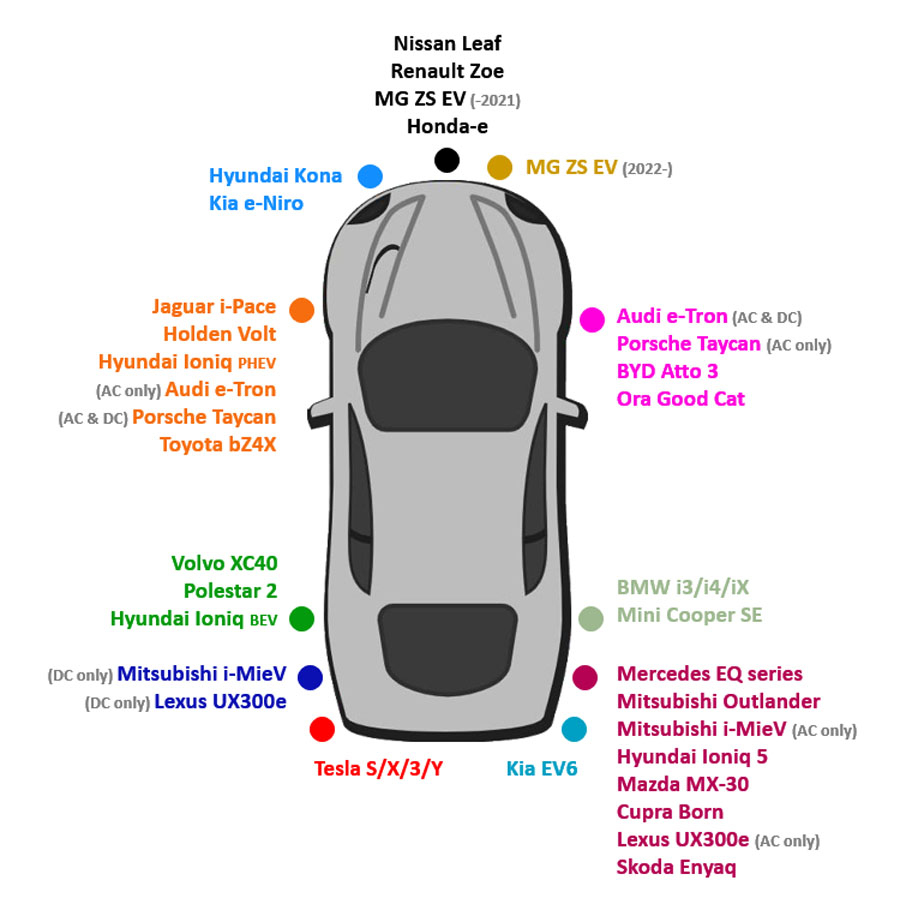
Charge port locations on vehicles currently (or soon to be) available in Australia. Image: Australian Electric Vehicle Association
Multi Car Families
The average Aussie home has more than two cars. It saves much car shuffling if your cable is long enough to reach the charge port on your EV, no matter where it is on the drive.
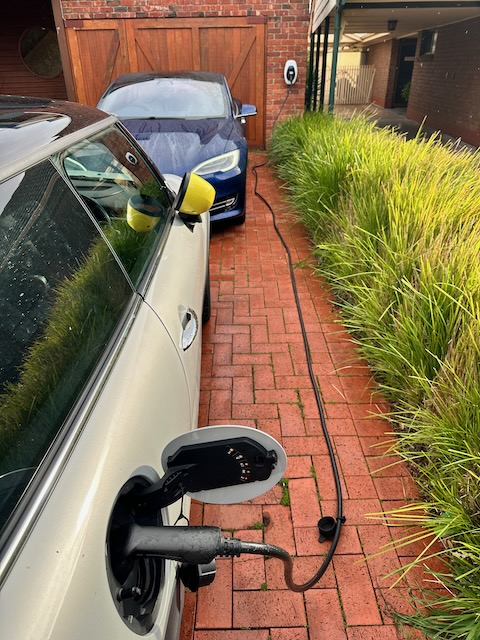
This driveway needs a 10m cable to charge the mini when it’s the second car on the drive.
What Are The Available Cable Lengths?
Tethered chargers generally have cables ranging anywhere from 5m up to 8m. Cables available for untethered EVSE range from 5m to about 10m long, or even longer if you search hard enough. SolarQuotes EV Charger Comparison Table lists the cable lengths for a range of recommended EVSE sold in Australia. If you dig a bit deeper, the data sheet link for each charger will tell you whether it’s tethered or untethered (this info will be added to the table soon).
My recommendation: Get an untethered charger and a nice long charging cable. If you get a tethered charger, avoid the 5m cable version, and get the 7m+ option.
#3 Are Coiled Cables A Good Idea?
With a tethered EVSE, you’re stuck with the cable that comes with it, which in most cases is a straight one. For untethered, you have the choice of straight or coiled. It’s down to personal preference. The pros and cons of coiled cables are:
Coiled Pros
- Space Efficiency: Coiled cables take up less space when stored, making them convenient for compact storage in vehicles or charging stations.
- Easy Handling: The coiled design allows easy extension and retraction, providing a tangle-free and organized charging experience.
- Flexibility: Coiled cables can stretch and retract to accommodate varying distances between the charging station and the vehicle.
- Trip Prevention: The coiled shape helps prevent tripping hazards by keeping the cable neatly compact and off the ground.
Coiled Cons
- Less Length: Coiled cables may have a shorter effective length than their straight counterparts when fully extended, limiting the charging range.
- Tension and Strain: The coiled design can create tension and strain on the cable, potentially leading to wear and tear over time.
- Limited Flexibility: Coiled cables offer flexibility within their extended range but may not provide as much maneuverability as straight cables.
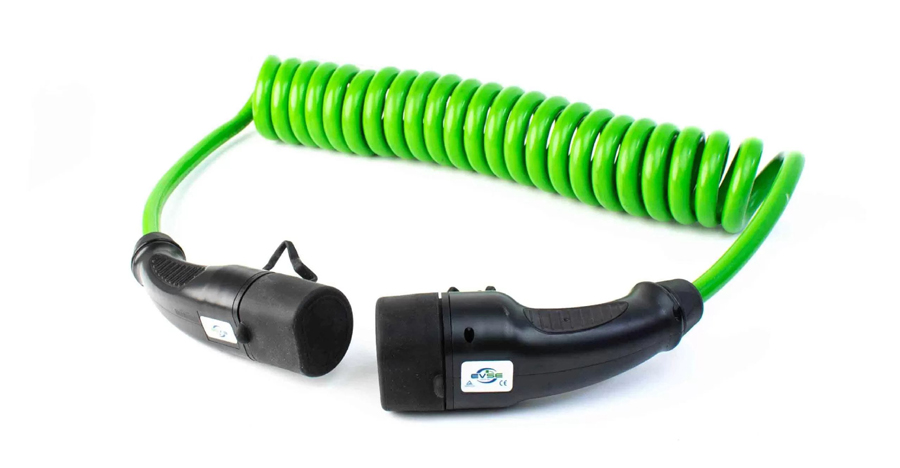
Coiled Type 2 to Type 2 EV cable, and hi-viz to boot. Maybe not your thing, but at least you won’t trip over it. Image: EVSE
#4 What Connector Types Should Be On Each End?
Thankfully, all EVs sold in Australia since 2020 now have a standardized socket that fits a Type-2 or Mennekes connector.
Most EVs will also have a second socket immediately below the Type 2 socket. This socket combination is called ‘CCS’ (Combined Charging System).As far as charging cables go, you don’t need to worry about a CCS plug because they’re only ever needed when using a DC fast charger (and already tethered to the charger).
When buying your cable, you only need a Type-2 connector on the car end and a Type-2 socket on the EVSE end. Having said that, I’d recommend double-checking your vehicle first – some old EVs use different connectors.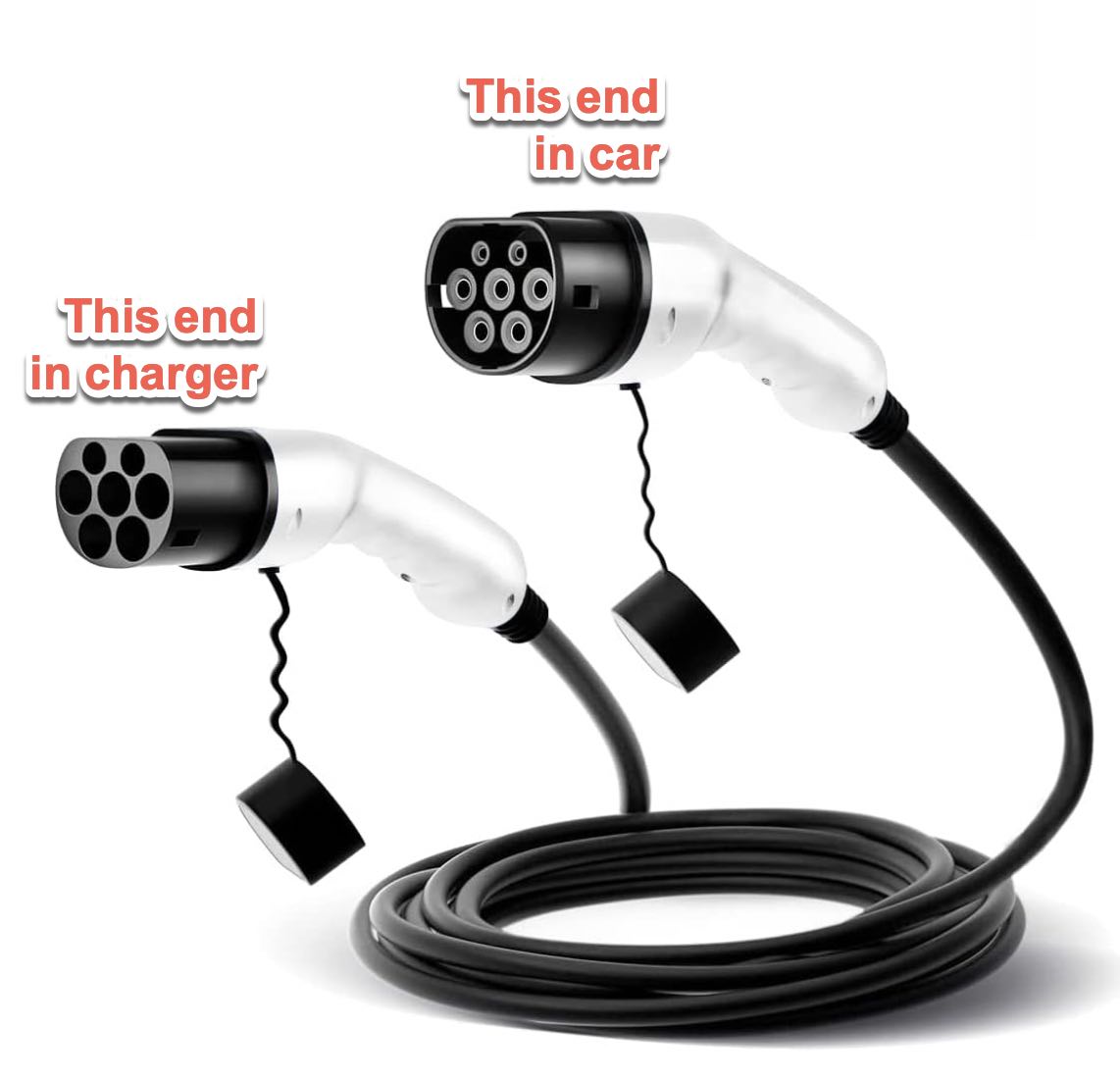
#5 Should you get a three-phase or single-phase charging cable?
Single-phase and three-phase
In Australia, conveniently, Type-2 plugs and sockets are used for both single-phase and 3-phase charging cables.
In a single-phase charging setup, typically used for residential charging, only a subset of pins is used to provide power. In a three-phase charging setup commonly found in commercial or public charging stations, all the pins enable higher charging power and faster charging rates.
After plugging in the cable, the onboard EV charger will automatically detect the available power supply and adjust the charging process accordingly.
Charging rates (kW)
Depending on the maximum charge limit on your car, single-phase, level-2 EVSE can charge up to around 7kW (32 amps), and three-phase can go up to 22kW.
Although you may only have a single-phase supply at home, a single-phase charging cable will be much slower when using AC public three-phase chargers, so bear that in mind when you purchase a cable. Yes, you can still use a three-phase charging cable on a single-phase charger at home (it will only charge from a single-phase, though) .
#6 What cable rating (amps) do you need?
Typical ratings for EV charging cables sold in Australia are:
- Single-phase: 3.6kW (16 amps)
- Single-phase: 7kW (32 amps)
- Three-phase: 11kW (16 amps per phase)
- Three-phase: 22kW (32 amps per phase)
The charging cable MUST handle the maximum charge rate of your vehicle. This is probably less than the EVSE is capable of supplying. However, it is also strongly recommended that the cable is rated for the full output of the EVSE.
Voltage Drop
Due to a phenomenon known as voltage drop, opting for a thicker cable (32 amp rather than 16 amp) is recommended. The thinner and longer cable causes increased resistance, resulting in less voltage at the end of the cable than at the start, and less precious power getting to your car battery. Voltage drop is more prevalent as the current is raised. For level-2 EVSE, that’s another big tick for 32 amp cables if you want a faster charge.
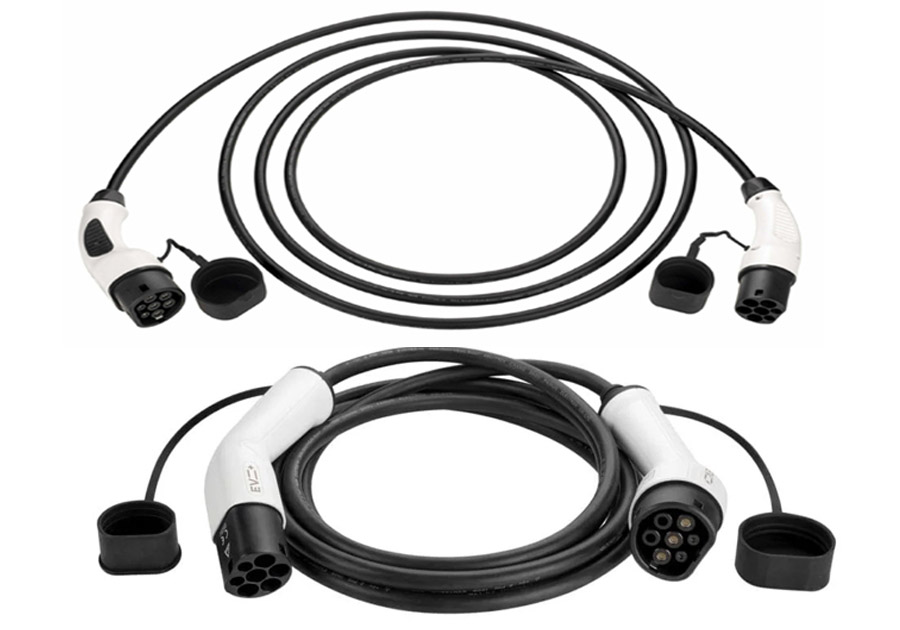
The thick and the thin of Type 2 to Type 2 charge cables. Top: Single-phase 3.6kW (16A). Bottom: three-phase 22kW (32A per phase). Image: EVChargePlus
My recommendation: Even if your home charger is single-phase, buy a 22kW (32A) 3-phase cable. It is only about $30 more than a single phase cable, and will allow you to get full speed at 3-phase Level 2 public chargers.
#7 Why You Can’t Daisy-Chain Charging Cables
If you buy an EVSE with a short 5m cable, you’ll soon realise it’s frustratingly short.
You may think daisy chaining a third-party charging cable will solve your woes – after all, the socket on that cable will slide into the tethered plug.
It won’t work.
There are some hacks to make it work but don’t do it. The Type-2 connectors are deliberately made so the plug from one cable will not mate into the socket of another cable all the way, so it won’t power up. This is a safety feature to prevent people from doing it! Considering the possible high charging currents, coupled with lethal voltage, it’s made this way for good reason.
Tom proves the point in this video:
#8 Do You Need Your Own Cable For Public Charging?
Yes and no. Public charging stations mainly come in two varieties – DC level 3 fast chargers and AC level 2 destination chargers.
Of these, DC fast chargers come with cables attached. They can charge at very high rates of up to 350kW straight into the battery. You can think of these as similar to a petrol bowser with a hose attached for fueling up an ICE vehicle.
On the other hand, AC destination chargers, which are far more common, may or may not have a cable tethered to the charger. I would go so far as to say that carrying your own cable is essential in Australia.
In this video, I’ve set it to start at the section where Finn shows how to use your own cable at a public charger:
Tip: If you have an untethered charger at home and store your charging cable in the car, you can use it at public chargers.
#9 Certifications And Standards
All electrical equipment imported, and sold in Australia must comply with AS/NZS 3820 and other applicable standards. Purchase online from overseas at your own risk
#10 Looking After Your Cable
It’s not rocket science. All the usual things apply.
Keep it clean, dry, don’t bend or kink it, don’t roll it too tight, don’t drive over it, don’t drop it, use the dust caps, treat it with respect and check for abrasions/damage occasionally.
Winding Up
So, in the world of EV charging cables, it’s clear that size does matter. The most important thing is to get a long and fat one: at least 7m and 32A, 3-phase. Your EV will thank you.
Hopefully, I’ve unravelled some mysteries and given a few handy hints to help you find the perfect fit. I think that’s about the long and short of it, and now I must go before I run out of puns and innuendos. I’m sure you’ll let me know if I’ve missed anything.
Oh, and you might want to read this EV Charging 101 guide if you haven’t already. Happy charging!
Footnotes
- The Delta charger shown can lock the cable in place using the ChargeHQ charging control app ↩
Original Source: https://www.solarquotes.com.au/blog/ev-charging-cables/



